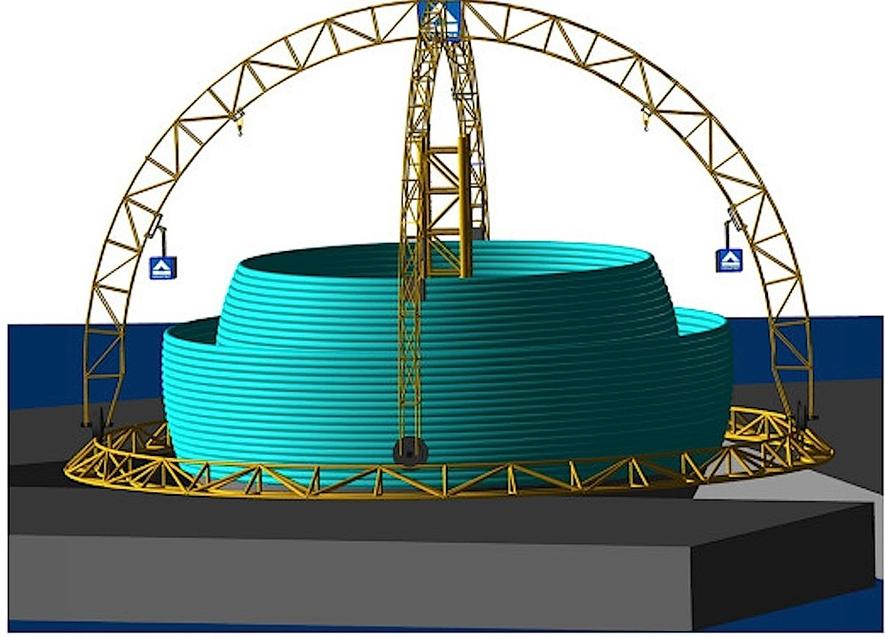News Release from windfair.net
Wind Industry Profile of
Wind, water ... and a hollow sphere?
Research project for energy transition
Ocean wind blows strong and resistant, which makes it an ideal source of energy from offshore wind farms. But what happens to the electricity when it is not needed? This has been a big problem for long and has also been used by wind power critics to question cost-intensive offshore wind farms.
Funded by the Federal Government, the research and development project 'StEnSEA' (Stored Energy in the SEA) is conducted by the Fraunhofer Institute for Wind Energy and Energy System Technology (IWES) in cooperation with construction giant Hochtief.
Operation of deep-water storage systems
The physical principle behind the energy storage facility is similar to that of conventional pumped storage power plants, but based not on two reservoirs, but a hollow sphere. So in this model the sea is used as the upper reservoir where the pressure gradient roughly corresponds to the depth of water. An artificial cavity with an integrated reversible pump turbine is placed on the sea bed as the lower reservoir. When power is needed, water flows into the sphere and drives the turbine thus generating power. If surplus power is available, water can be pumped out of the sphere again, thus effectively charging the storage system. According to Foerderinitiative Energiespeicher, the StEnSEA concept allows an installation of large storage capacities in the immediate vicinity of future offshore wind parks.
Hollow spheres on the seabed
The hollow spheres which are to be installed on the seabed, are large concrete bubbles with a diameter of 30 meters into which the pump is incorporated. The walls of the balls are each 3 meters thick. They need to be placed in a water depth of 500 to 700 meters, the maximum depth at which today's pump technology can still be used. To go further down into the deep sea, the pressure on the material would be too great.
According to Ingenieur.de, the efficiency of such hollow sphere should be at 80 to 85 percent. Up to 20 megawatt hours of electricity can be stored in one sphere, which in turn means that 80 to 200 spheres per offshore wind farm will be necessary to reach a capacity of 1600 to 4000 megawatt hours.
Construction of first sphere nearly finished
Hochtief has now finished constructing a first hollow sphere and sent it to the IWES in Bad Hersfeld a few days ago, where the necessary technology will be implanted. In fall, the sphere, which was constructed at a scale of 1:10, will be submerged in Lake Constance near Überlingen in 100 meters depth to test its functions for four weeks.
Project manager Matthias Puchta on the importance of the tests: “It's a very exciting, innovative and unique project: A completely new technology to collect new knowledge and experience.” The project, which has been running since 2013, is now entering its decisive stage.
Unsuitable for Germany -?-
Should this method prove to be practical and competitive, it will most likely not be used in German waters, at least not in the planned size. Reason: North Sea and Baltic Sea are too shallow for the targeted depth of 500 meters. The North Sea on average is a whopping 94 meters deep. Only at the Norwegian Channel between Norway and the Shetlands it comes to a depth of 725 meters. The Baltic Sea is on average even only 52 meters deep with its lowest point being 459 meters. Also, the previous world leader in offshore wind energy, the UK, has hardly suitable waters for the new storage technology.
So either the researchers needs to reduce the intended depth – or these new storage facilities are only suitable for another not yet entirely mature technology: 'Floating turbines' which can theoretically be installed on the high seas.
- Author:
- Katrin Radtke
- Email:
- kr@windmesse.de


